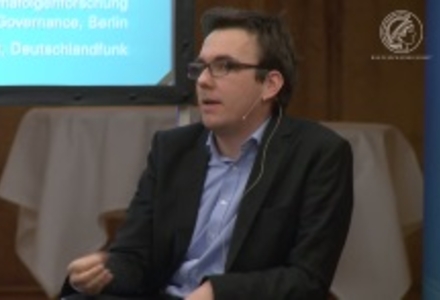What risks come at what cost
On a podium organized by the Max Planck Society MCC scientist Jan Minx explains if there is scientific evidence for the 2 degree target.

[Translate to EN:] Foto: Max-Planck-Gesellschaft
The debate on international climate policy consistently refers to the 2 degree target. It is, after all, the central point of reference ever since the world climate conference in Kopenhagen. Based on the IPCC’s Fifth Assessment Report this long-term goal is now under review. In regards to the question if there is scientific evidence for the 2 degree target Jan Minx, head of the MCC working group Applied Sustainability Science and head of the Technical Support Unit of the IPCC’s Working Group III, gives the following answer: “If human kind aims at avoiding large-scale consequences, there is scientific evidence for the 2 degree target.”
However, scientists cannot answer this question all by themselves, since the question is a normative one. “Rather the whole society has to make a decision what kind of risks it will take at what cost,” Minx says. “In this process science – like a cartographer – should provide maps of knowledge that characterize alternative pathways. Society and policy makers together then should decide on the preferred route as the navigators.”
The scientist furthermore refers to the IPCC’s Fifth Assessment Report which clearly states that the world is currently heading towards a 4 degree world, despite some first efforts in international climate policy. Minx says: “Emissions are rising today even faster than they used to the 90s.” The previous climate mitigation would not be sufficient. “We need to stop our business as usual as fast as possible.”
<iframe src="https://www.youtube.com/embed/h38Q3z_C6Ao" frameborder="0" height="360" width="640"></iframe>





